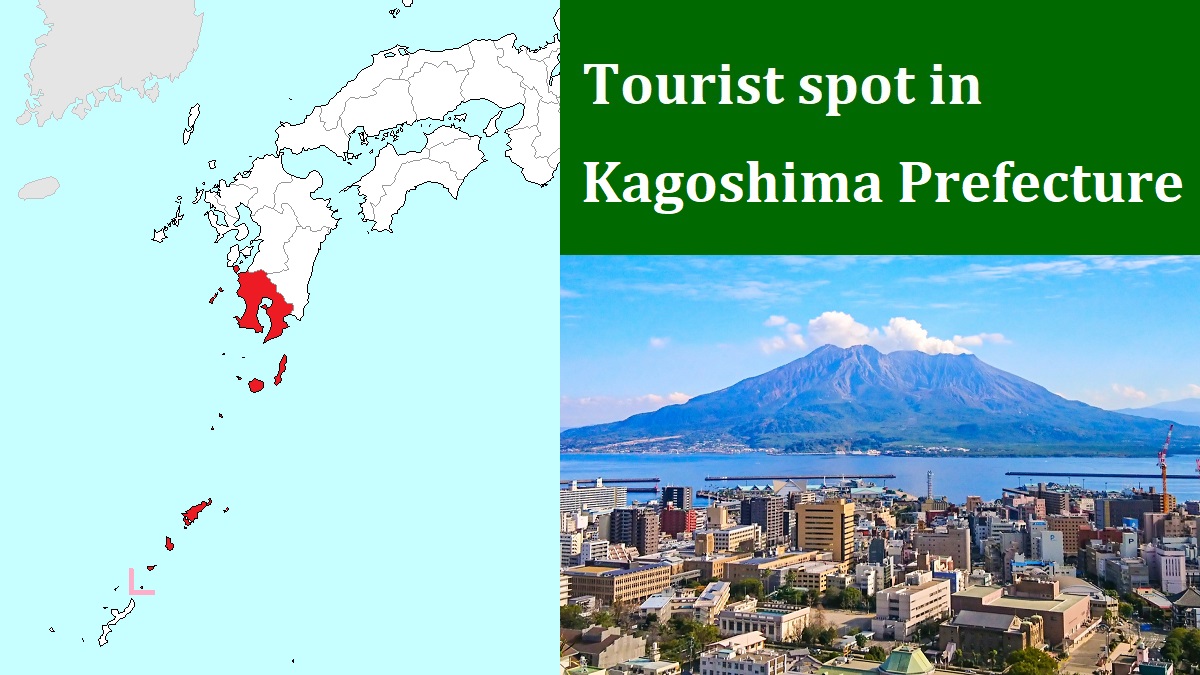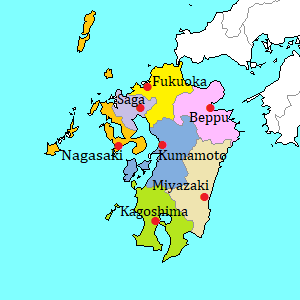Kagoshima city [鹿児島]
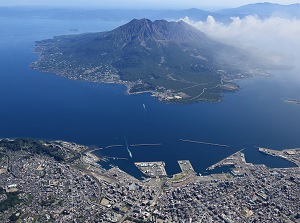
Center of Kagoshima city and Sakurajima
Photo: Kagoshima Prefectural Visitors Bureau
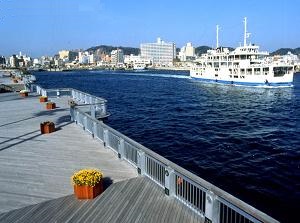
Kagoshima Port
Photo by Kagoshima City
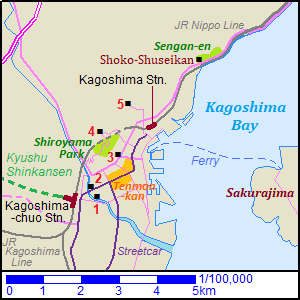
Map of Kagoshima city
1) Museum of Meiji Restration
2) Okubo Toshimichi statue
3) Saigo Takamori statue
4) Saigo Cave 5) Nanshu Cemetery
Kagoshima city is the capital of Kagoshima Prefecture.
It has a population of about 600,000 people.
It is on the east side of Satsuma Peninsula, and faces Kagoshima Bay.
Active Sakurajima volcano is seen just beyond the bay in front of the downtown.
Its volcanic ash often comes down in this city.
The central railway station is Kagoshima-chuo (鹿児島中央) station, and is located on the west side of the downtown.
It is the terminal station of Kyushu Shinkansen and JR Kagoshima and Nippo Lines.
There is Kagoshima Port about 2.5 km east of Kagoshima-chuo station.
There are some piers, and the ferries leave for Sakurajima, the southern islands and Okinawa.
And promenades and parks are set up along the port, so it is a good scenic spot.
The downtown between Kagoshima-chuo station and Kagoshima Port is Tenmonkan (天文館).
It is the largest downtown in the southern Kyushu Island, and there are many shops and restaurants.
Most streets have arcades to protect against volcanic ash and strong sunlight.
Streetcar is operated in the center of the city, so it is convenient to travel around the city.
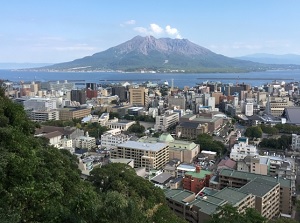
Kagoshima city and Sakurajima from Shiroyama
Photo: Kagoshima Prefectural Visitors Bureau
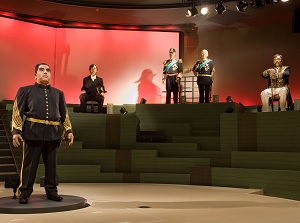
Heroes of Kagoshima
in Museum of Meiji Restoration
Photo: Kagoshima Prefectural Visitors Bureau
In the middle of the 14th century, Shimazu Family built a castle and governed the current Kagoshima Prefecture.
Kagoshima had been a castle town, but the old town had been destroyed by the bomberment by Britain in 1863, the civil war in 1877 and the air laid in 1945 during the World War II.
There is Mount Shiroyama (城山) about 1.5 km north-northeast of Kagoshima-chuo station.
It is a hill which is 108 meters above sea level, and there was Kagoshima Castle on the hill from 1601 to 1877.
Now, the site is Shiroyama Park, and the observatory has a good view of central Kagoshima, Kagosima Bay and Sakurajima.
Kagoshima produced many progressive samurai.
They overthrew the feudal government and Meiji Government was established for a modern nation in 1868.
Especially, Saigô Takamori (1828-1877) and Ôkubo Toshimichi (1830-1878) were the prominent samurais and politicians.
There are some monuments and spots relating to them.
Museum of Meiji Restoration (維新ふるさと館, "Ishin Furusato-kan" in Japanese) is about 0.5 km east of Kagoshima-chuo station.
It is the museum introducing the old Satsuma Domain and Meiji Restoration around 1868.
The images and documents about advanced Satsuma Domain and samurais are displayed.
Saigô Takamori and Ôkubo Toshimichi were born near this museum.
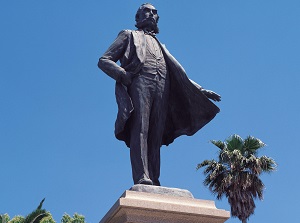
Okubo Toshimichi statue
Photo: Kagoshima Prefectural Visitors Bureau
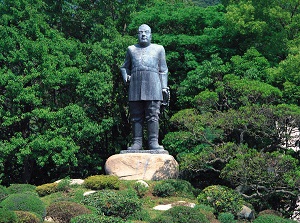
Saigo Takamori statue
Photo: Kagoshima Prefectural Visitors Bureau
There is Ôkubo Toshimichi statue about 250 meters northwest of the museum.
He was one of the persons who overthrew feudal Edo government and established the Meiji government.
He hold important positions such as Minister of Finance and Interior Minister in the govermnent, but he was assassinated in 1878.
There is Saigô Takamori statue at the southeasten foot of Mount Shiroyama.
He was also one of the persons who overthrew feudal Edo government and established the Meiji government.
He became the General.
But considerable disagreement about foreign policy occured in the government, so he went into opposition in 1873.
He founded a private school in Kagoshima, and many hot-blooded young men gathered.
However, the members who had aggravated a grievance against the government rose in revolt in 1877.
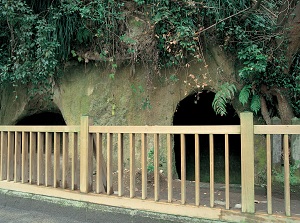
Saigo Cave
Photo: Kagoshima Prefectural Visitors Bureau
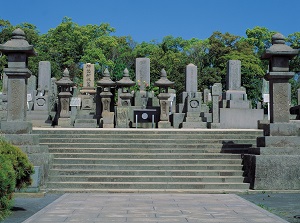
Nanshu Cemetery
Photo: Kagoshima Prefectural Visitors Bureau
When the revolt was suppressed by the government troops, Saigô chose death in Mount Shiroyama.
There is Saigô Cave on the north side of Mount Shiroyama.
In 1877, Saigô Takamori had stayed in the cave for his last 5 days in the revolt against the government.
Saigô and his last troop had taken refuge in this cave.
Many of his partisans had already been killed, so he admitted his defeat there.
At last, he ordered his friend to cut off his head, and he was gone by his friend's sword.
Nanshû Cemetery (南洲墓地) is about 1.3 km north of Mount Shiroyama.
"Nanshû" is the pseudonym of Saigô Takamori. (Saigô Nanshû).
This cemetery has 2,032 tombs of the members of Saigô troop.
Saigô's tomb is in the center of the cemetery.
Around this cemetery, there are Nanshu Shrine and Nanshu Memorial Museum.
How to get here
By Kyushu Shinkansen, 1 hours and 20 to 35 minutes from Hakata to Kagoshima-chuo.
By JR limited express, about 2 hours and 10 minutes from Miyazaki to Kagoshima-chuo.
From Kagoshima Airport, about 40 to 50 minutes by express bus.

